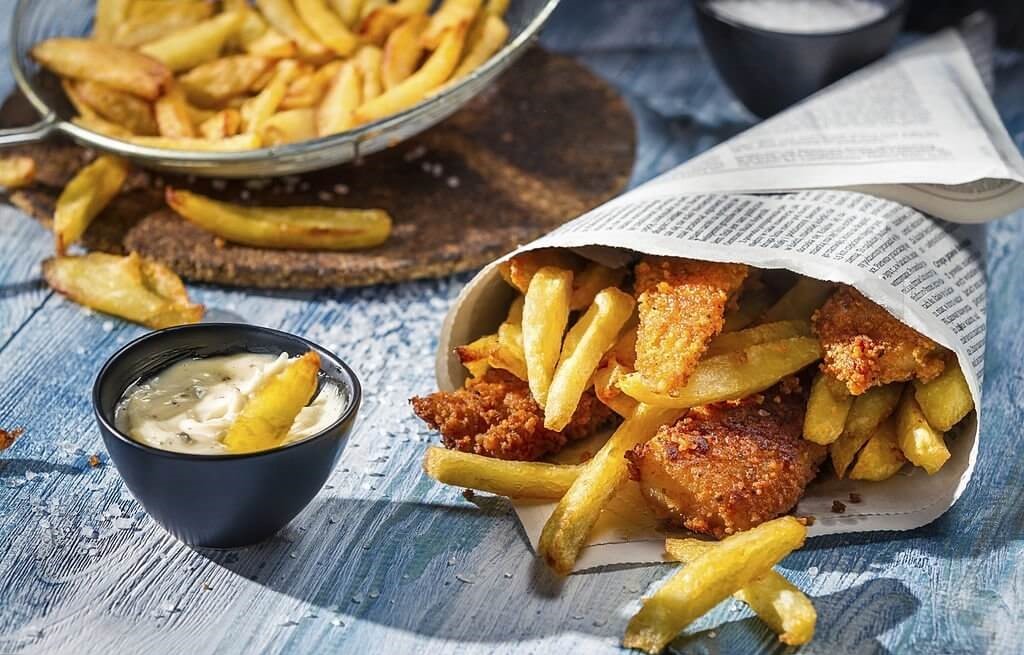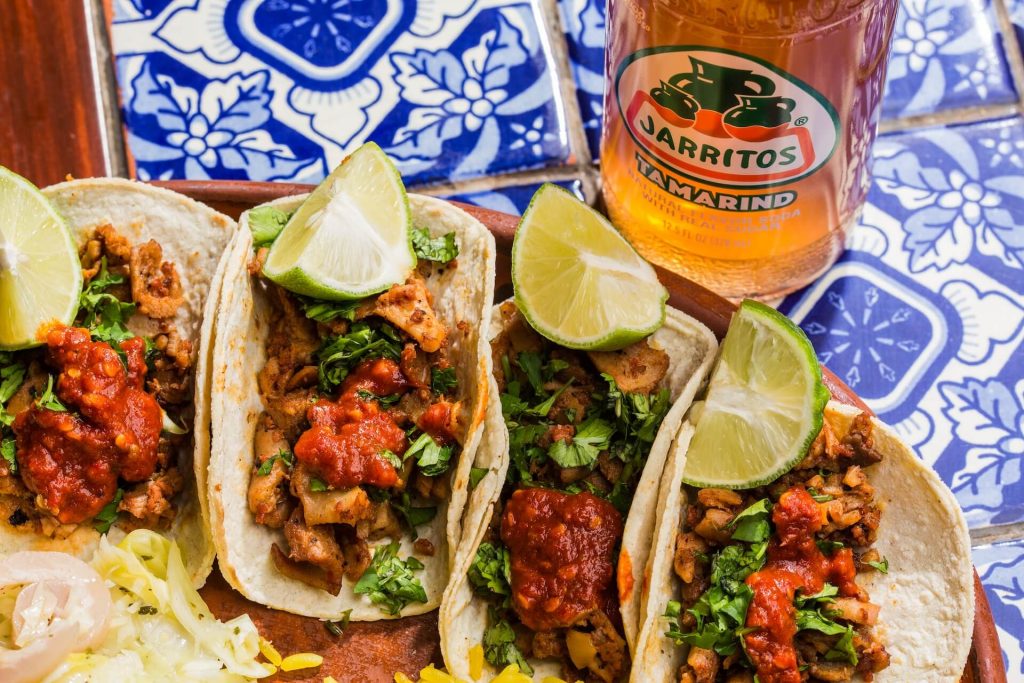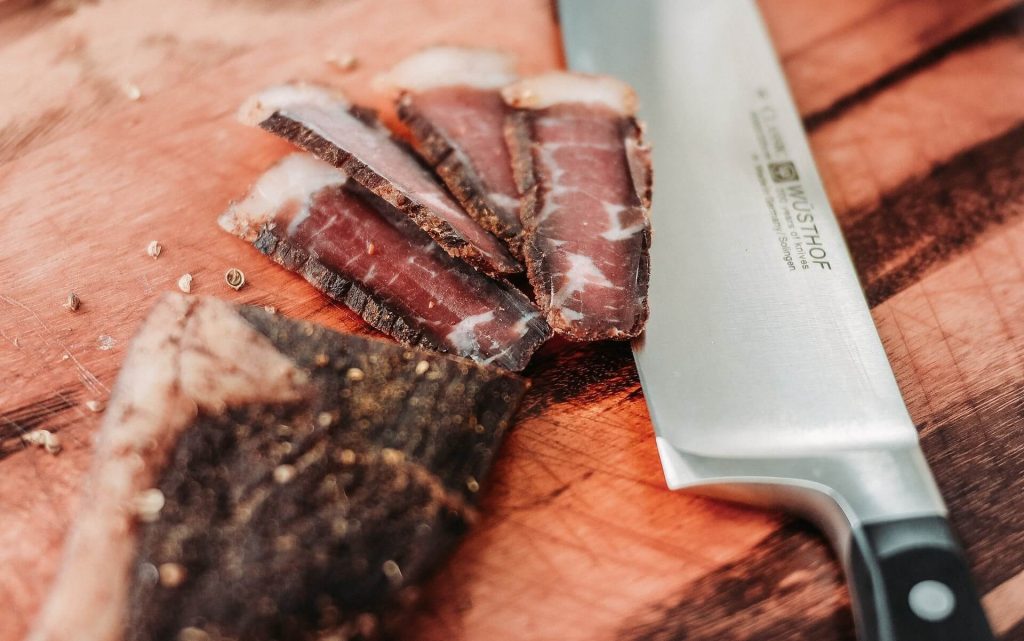Handheld Delights: Exploring Iconic Snacks from Different Continents
Embark on a thrilling global gastronomic adventure as we delve deeper into the iconic snacks that span across continents. From the vibrant flavors of Asia to the rich tapestry of European treats, the fiery fusion of the Americas, the aromatic wonders of the Middle East, the diverse offerings of Africa, and the Aussie delights from Down Under, these handheld delicacies promise to take your taste buds on an unforgettable journey filled with historical significance and cultural connections.
Asia

Onigiri (Japan)
Our culinary expedition begins in Japan, where Onigiri, also known as omusubi, is an integral part of Japanese culinary history. With origins dating back to the 11th century, Onigiri has been a staple for centuries. Initially, it served as a portable and easily preserved food for travelers and warriors. Today, Onigiri represents the essence of Japanese cuisine, embodying simplicity, balance, and harmony. These delightful rice balls are meticulously formed by hand, with various fillings, such as grilled salmon, pickled plum (umeboshi), or seasoned seaweed (nori), creating a delightful blend of flavors and textures.
Kimbap (Korea)
Moving to Korea, we encounter Kimbap, a dish with its roots in royal cuisine. Introduced during the Goryeo Dynasty (918-1392), it was originally known as “gim-mari.” Over time, the dish evolved into Kimbap, the name referring to the seaweed (gim) used to wrap the rice. Kimbap reflects the Korean passion for balance, featuring a colorful combination of vegetables, meat, and egg, rolled into a cylindrical shape. Kimbap is not only a popular snack but also a symbol of togetherness, often shared among friends and family during festive occasions.
Spring Rolls (China)
Our journey takes us to China, where Spring Rolls have a long and storied history dating back to the Eastern Jin Dynasty (266-420). Initially, Spring Rolls were used as a form of currency and were considered a symbol of prosperity and wealth. Today, they are cherished as a traditional snack during the Chinese New Year and other celebratory events. These delicate pastries are expertly filled with a mixture of vegetables, meat, and sometimes seafood, before being skillfully rolled and deep-fried to perfection.
Samosas (India)
Continuing our adventure to India, we relish the iconic Samosas, which bear the influence of the Central Asian sambusak brought to the region during the Mughal Empire. With a history spanning over a thousand years, Samosas have become an integral part of Indian culinary culture. These triangular pastries are filled with spiced potatoes, peas, and sometimes meat, reflecting the diverse regional flavors of India. Samosas are commonly enjoyed during festivals, weddings, and as everyday snacks.
Bánh Mì (Vietnam)
Finally, we land in Vietnam, where Bánh Mì showcases a unique blend of cultures. Introduced during the French colonial period, Bánh Mì fuses French baguettes with Vietnamese flavors. This culinary fusion reflects Vietnam’s history of cultural exchange and global influences. The baguette is filled with various types of meat, such as grilled pork, pâté, or cold cuts, and topped with pickled daikon, carrots, cucumber, cilantro, and a drizzle of spicy sauce, creating an explosion of flavors that exemplifies Vietnam’s culinary innovation.
Europe

Pão com Chouriço (Portugal)
Crossing continents to Portugal, we encounter Pão com Chouriço, a beloved snack that represents the country’s rich culinary heritage. Portuguese explorers introduced chouriço sausage to various regions during the Age of Discoveries, and it became a fundamental element of the country’s cuisine. Soft bread filled with flavorful chouriço sausage provides a quick and satisfying treat, often enjoyed with a glass of Vinho Verde, showcasing Portugal’s love for simple yet delectable food.
Fish and Chips (United Kingdom)
Next, we reach the United Kingdom, where the quintessential Fish and Chips take center stage. With origins dating back to the 19th century, this beloved dish was born in the bustling streets of London’s East End. Fried fish, such as cod or haddock, is paired with crispy golden fries, traditionally wrapped in newspaper, a practice that became less common due to hygiene concerns. Today, Fish and Chips continue to be a symbol of British culinary heritage and remain a favorite comfort food cherished across the nation.
Croissant (France)
Traveling to France, we embrace the elegance of the Croissant. Introduced by Austrian bakers in the early 19th century, Croissants quickly became an integral part of French breakfast culture. These buttery, flaky pastries are the epitome of French artistry and craftsmanship. From the traditional plain croissant to various filled versions, such as chocolate or almond, Croissants embody French refinement and culinary excellence.
Churros (Spain)
Spain enchants us with the inviting aroma of Churros, a snack with a fascinating history. Originating in Spain during the 16th century, Churros were inspired by Chinese culinary traditions brought back by Spanish explorers. The dough is piped into hot oil and deep-fried to crispy perfection before being dusted with sugar and cinnamon. Often accompanied by a cup of thick, velvety chocolate for dipping, Churros have become an iconic Spanish treat enjoyed during festivals, celebrations, and leisurely mornings.
Bratwurst in a Bun (Germany)
Our culinary journey takes us to Germany, where Bratwurst in a Bun shines as a culinary symbol of German culture. The history of Bratwurst dates back to medieval times when sausage-making was a common practice. The word “Bratwurst” itself stems from the Old High German words “brät” (finely chopped meat) and “wurst” (sausage). Served in a long bun with mustard or other toppings, Bratwurst in a Bun captures the essence of German street food, enjoyed at festivals, markets, and beyond.
Americas

Empanadas (Various Latin American countries)
We venture into Latin America, where Empanadas delight with their rich culinary heritage. The origins of Empanadas can be traced back to medieval Spain, and they were later brought to Latin America by Spanish colonizers. Over the centuries, each Latin American country has infused its own unique flavors and ingredients into this versatile pastry, resulting in a delightful array of sweet and savory fillings. Empanadas have become a staple across the region, often enjoyed during festive occasions and as a popular street food.
Tacos (Mexico)
In Mexico, we indulge in the street food sensation of Tacos, which have a history that predates Spanish colonization. The word “taco” was derived from the Nahuatl word “tlahco,” referring to a plug or wad used to fill a gap. Tacos feature folded corn tortillas filled with an array of mouthwatering options, including juicy meats, flavorful beans, fresh vegetables, zesty salsas, and creamy guacamole. Tacos are deeply ingrained in Mexican culture, representing the country’s rich culinary heritage and its love for communal dining.
Arepas (Venezuela and Colombia)
As we journey further through Latin America, Arepas make their mark as a quintessential Venezuelan and Colombian delicacy. With origins dating back to pre-Columbian times, Arepas were a staple of the indigenous tribes in the region. Made from ground maize or cornmeal, Arepas are split open and filled with cheese, meat, or other savory toppings, offering a taste of the country’s culinary diversity and cultural heritage.
Soft Pretzel (United States)
Crossing into North America, the United States offers Soft Pretzels as a popular snack with a rich historical background. The origins of the Pretzel can be traced back to medieval Europe, where it was associated with Lenten practices. German and Dutch immigrants brought the Pretzel to the United States during the 18th century, and it quickly gained popularity, especially in Pennsylvania. Today, Soft Pretzels are enjoyed throughout the country, often at sporting events, carnivals, and as a beloved street food.
Middle East

Fatayer
Our culinary exploration leads us to the Middle East, where Fatayer reigns as a cherished snack with a history spanning centuries. The word “fatayer” is derived from the Arabic root “fatar,” meaning “to split,” referring to the opening of the dough to encase the fillings. Fatayer showcases the region’s aromatic wonders, with its triangular pastries filled with spinach, cheese, or meat, offering a delightful burst of flavors and fragrances.
Manakeesh
In Levantine regions, we savor Manakeesh, a flatbread with historical connections to the ancient Levantine civilizations. The word “manakeesh” is believed to be derived from the Arabic word “naqash,” meaning “to sculpt” or “to carve,” referencing the dough’s indentations. Topped with za’atar (a blend of spices) or cheese, Manakeesh represents the region’s love for simple yet flavorful food, often enjoyed as a breakfast or snack.
Arayes
Grilled pita bread filled with spiced meat, often served with tahini sauce, brings a burst of flavors and textures, representing the rich culinary traditions of the Middle East. Arayes offer a tantalizing taste of Levantine cuisine, with influences from Jordan, Lebanon, and other neighboring countries.
Crunchy Roasted Cumin Chickpeas
Roasted chickpeas seasoned with cumin offer a delightful and nutritious Middle Eastern snack, perfect for satisfying cravings on the go. Chickpeas have been cultivated in the region for millennia, making this crunchy and flavorful treat a timeless favorite.
Falafel (Lebanon)
Last but not least, we encounter Falafel, a dish with ancient origins, dating back to ancient Egypt and the Levant. While its precise history remains debated, Falafel has become a cultural icon throughout the Middle East and beyond. These deep-fried balls made from ground chickpeas or fava beans are typically served in pita bread with vegetables and tahini sauce, delighting in their flavorful simplicity.
Africa

Tameya (Egypt)
Our journey through Africa leads us to Egypt, where Tameya enchants its deep-fried falafel made from ground fava beans or chickpeas, often served in pita bread. Tameya reflects the country’s culinary heritage and its love for hearty and flavorful street foods.
Ghana Chichinga (Ghana)
In West Africa, Ghana Chichinga impresses with its spiced and grilled meat skewers, captivating with bold flavors and a smoky aroma, embodying the vibrant street food scene of Ghana. Chichinga is an essential part of Ghanaian culture and is often enjoyed during festivals and social gatherings.
Biltong (South Africa)
South Africa introduces us to Biltong, a snack with historical ties to the country’s rich indigenous past. Biltong originated as a method of preserving meat during the migration of indigenous tribes, and it later evolved into a cherished culinary tradition. Dried and seasoned strips of meat, similar to beef jerky, Biltong represents South Africa’s love for flavorful and hearty snacks.
Sambusa (East Africa)
Finally, in East Africa, Sambusa makes its mark with a history intertwined with the region’s diverse cultural influences. Similar to Indian Samosas, Sambusa showcases the culinary exchange between India and the coastal regions of East Africa. These deep-fried triangular pastries filled with spiced meat or lentils offer a delightful taste of the region’s culinary diversity and cultural connections.
Australia

Barbecued Snags
Our journey concludes in Australia, where Barbecued Snags take center stage in the country’s laid-back and outdoor-oriented culture. The tradition of barbecuing sausages dates back to the early 20th century, and today, Barbecued Snags are a beloved Aussie snack enjoyed at gatherings, sporting events, and family barbecues.
Aussie Meat Pie
Last but not least, the beloved Aussie Meat Pie beckons with its savory pies filled with minced meat and gravy, encased in flaky pastry. Meat Pies have a long history in Australia, becoming a favorite of early settlers and sailors during the 19th century. They are now an iconic Australian dish, often enjoyed with tomato sauce (ketchup) and a side of mushy peas.
Vegemite Toast (Australia)
We cannot leave Australia without mentioning Vegemite, a savory yeast extract, and its quintessential pairing with toast. A cultural icon and a staple in many Aussie households, Vegemite has been enjoyed since the 1920s, spreading its unique flavor across the continent.
Conclusion
As we wrap up our global gastronomic adventure, we are left with an even deeper appreciation for the rich tapestry of flavors, traditions, and cultures that these handheld delights represent. Each snack tells a unique story of its people, history, and the universal love for good food that transcends borders. From the delicate balance of Asian delicacies to the hearty comforts of European treats, the vibrant medley of Americas street foods, the aromatic wonders of Middle Eastern bites, the diverse offerings of Africa, and the Aussie delights from Down Under, these iconic snacks are more than just culinary treasures; they are a testament to our shared humanity, united by the simple joy of delicious snacks enjoyed with our hands, anywhere, anytime. So, let us continue to embrace and celebrate these handheld delights, savoring the flavors and traditions they offer, as we savor the wonders of our world through the diverse array of iconic snacks from different continents. Bon appétit!



